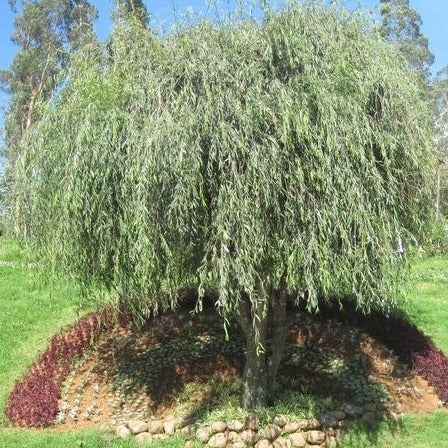
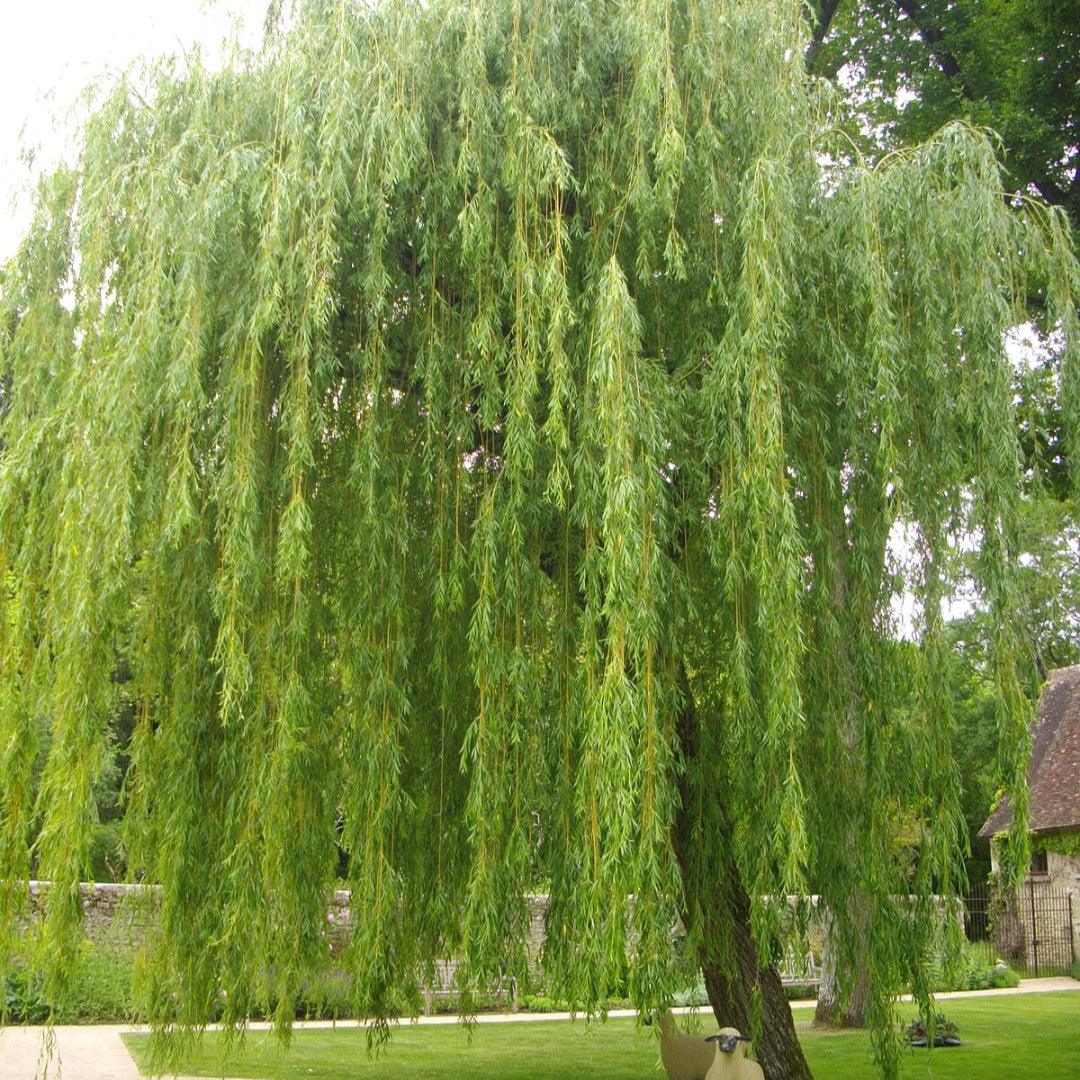
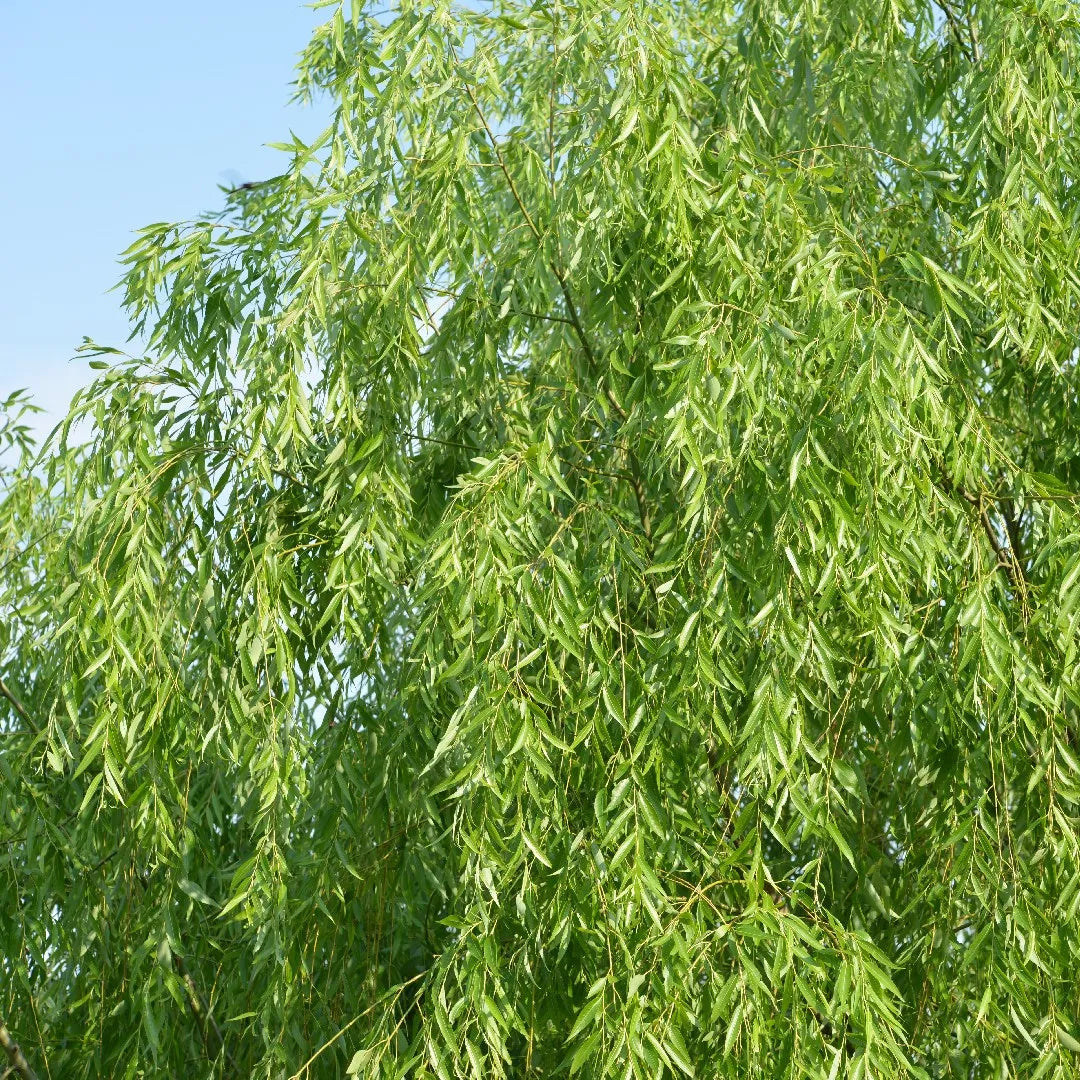
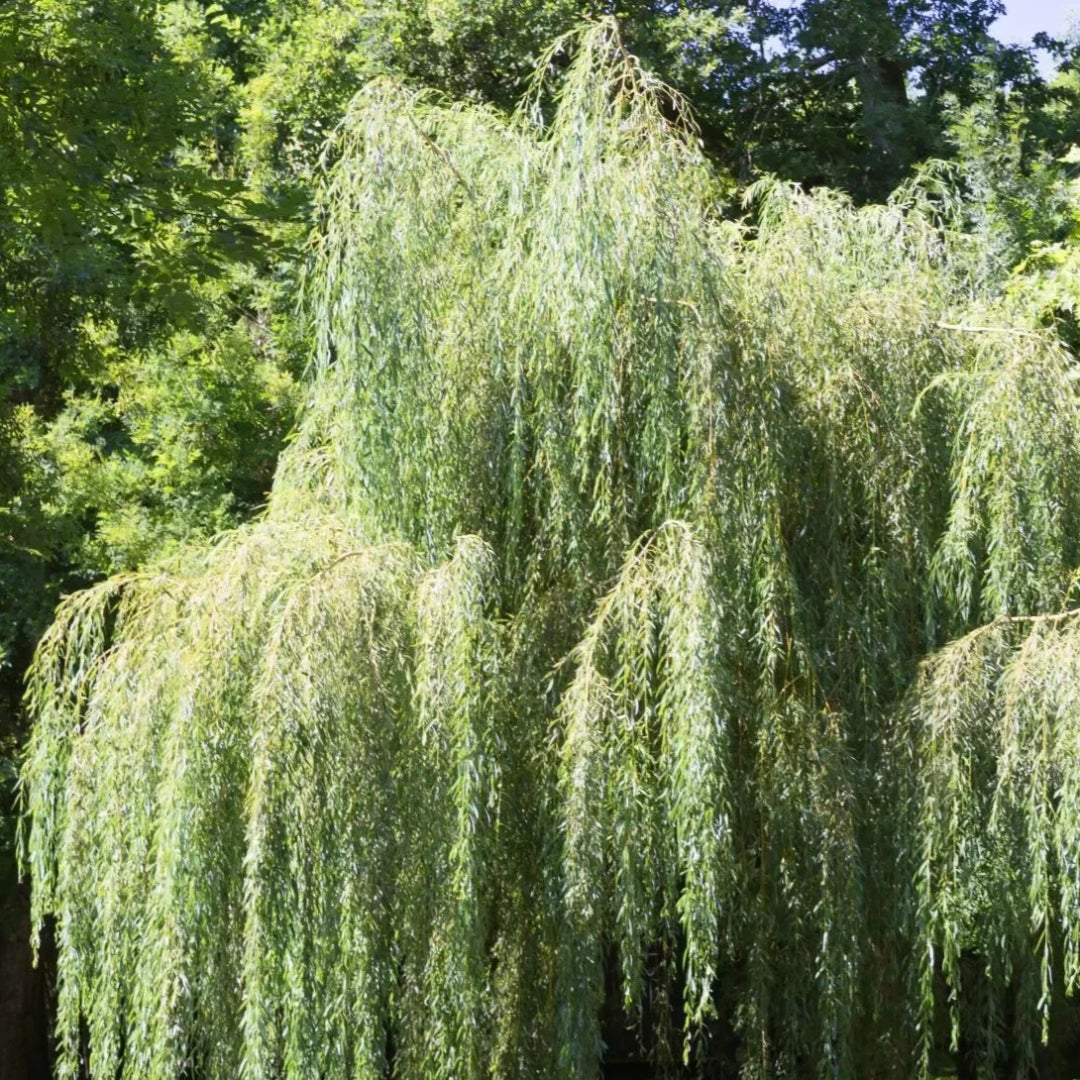
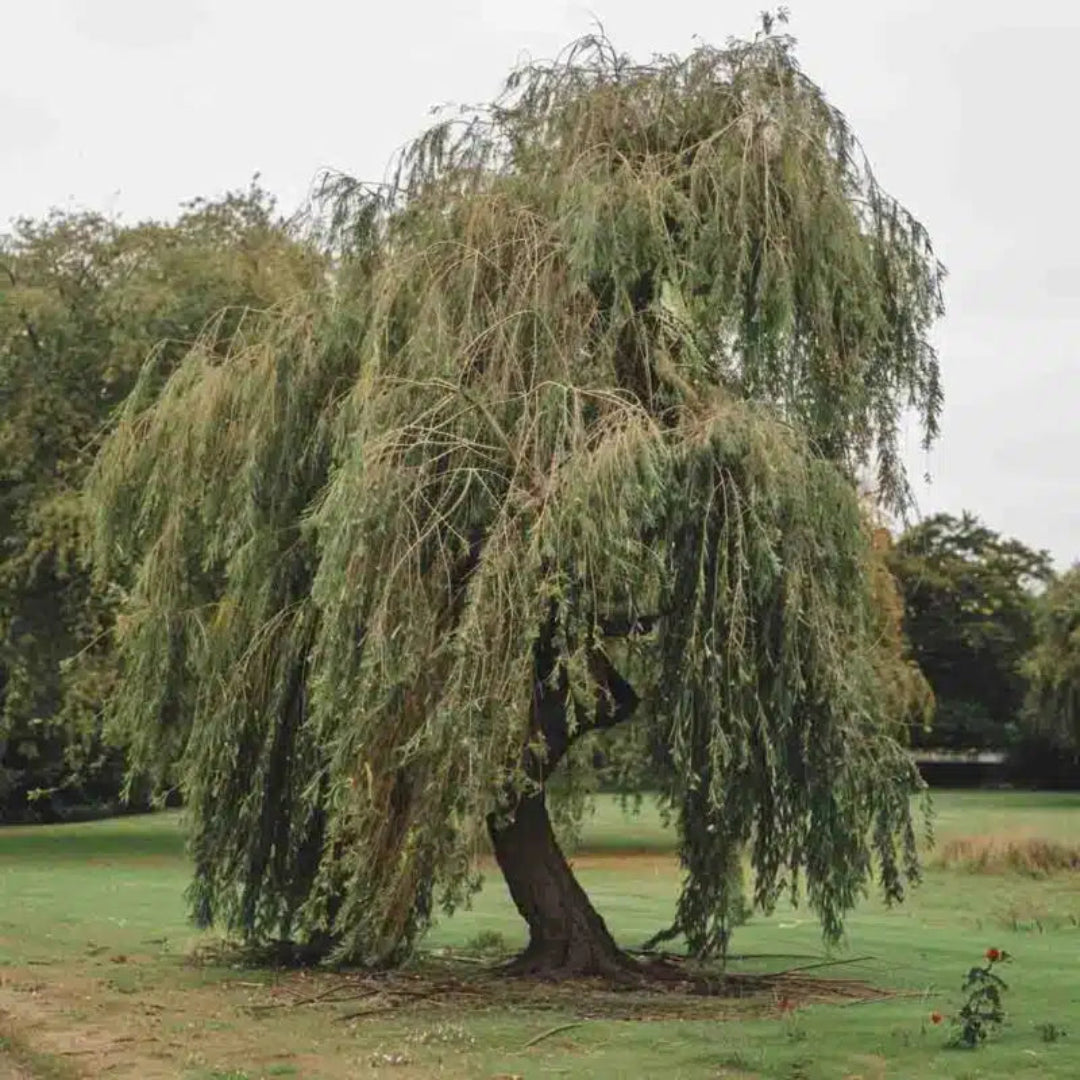


Product Details
Description
Zones

Plant Care Tips
Local search
Customer Service
Pixies Gardens
2024 Mcdaniel Mill Road Conyers GA 30094
Email: cs@pixiesgardens.com
Frequently Asked Questions
What is a Weeping Willow Tree?
A weeping willow tree (Salix babylonica) is a fast-growing deciduous tree known for its long, pendulous branches and lush green foliage. Its dramatic shape makes it a favorite in landscapes near water or in open spaces.
How large does a Weeping Willow get?
Mature Weeping Willows typically reach 30–50ft in height and spread 30–40ft wide, requiring ample space for their sweeping canopy.
What’s the ideal location for planting a Weeping Willow?
Choose a sunny or partly shaded spot with moist, well-drained soil, preferably near a pond, stream, or an area that stays consistently damp.
How fast does a Weeping Willow grow?
Weeping Willows are very fast growers, often adding 6–8 ft per year under ideal conditions.
How much sunlight does a Weeping Willow need?
These trees thrive in at least 6 hours of sunlight per day but can tolerate partial shade.
Is the Weeping Willow easy to care for?
Yes! Once established, Weeping Willows are low maintenance, requiring only regular watering, occasional feeding in spring, and pruning to remove dead or crossing branches.
How often should I water my Weeping Willow?
Keep the soil consistently moist throughout the first year. Once the tree matures, water during dry spells or if not planted near the water. Avoid letting the soil dry completely.
Does the Weeping Willow have any special soil requirements?
This tree thrives in moist, fertile, well-drained soil but can adjust to different soil types, including sandy or clay soils.
When should I prune a Weeping Willow?
Trim in late winter or early spring to preserve the shape and eliminate any dead or damaged branches. Periodic thinning enhances air circulation and supports overall tree health.
Is the Weeping Willow tree good for wildlife?
Yes! Its spreading branches offer shelter for birds, and its leaves provide food for caterpillars and other wildlife.
Is the Weeping Willow resistant to deer or pests?
While generally hardy, young Weeping Willows may occasionally suffer damage from deer or insects. Protective measures may help newly planted trees.
Can Weeping Willows be grown in containers?
Because of their eventual size and fast growth, Weeping Willows are not recommended for long-term container growth. They are best suited to a spacious landscape.














